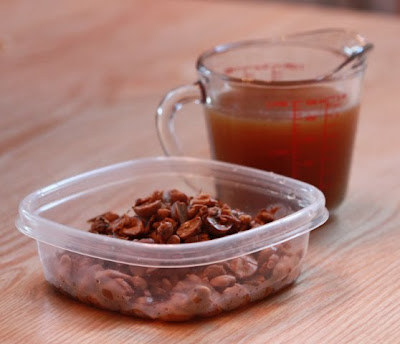
After decades of breeding work, the American Chestnut Foundation is now making Castanea dentata nuts available that are likely to be resistant to the blight! There is hope! This news makes me glad in a profound way. But gads, the price tag is $350 per pair. No, I didn't displace a decimal point in that number.
But it's a good thing, I suppose, because I don't yet have enough experience to be growing such a critically endangered species. Those nuts are for arboretums and the Whitehouse and people who really really know what they are doing. The price should drop eventually as production goes up, and in the mean time, there are similar species that I could practice on, such as Chinkapin, Castanea pumila, pictured above. So, I ordered some.

And oh. Crap. I should have read up on these guys a little more. Sometimes, when conditions are right, they start germinating right on the tree. Unlike other seeds I have started over the winter, I don't have a few months to leisurely get them into containers. These little guys arrived already trying to grow.
So I posted a flier up at work explaining my need for containers, and entitled it "Help! My Nuts are Germinating!" My coworkers can't resist a good gag, so by the following day, my desk was covered in milk jugs and soda bottles.
(This prompted a discussion in which a male friend asked after my nuts, and I asked after his jugs, and we both walked off laughing our asses off. I love my workplace!)

The soda bottles, I cut like this.

And the milk jugs, like this.

This gives me maximum pot space in each jug type. With the milk jugs, it also allows me to hold the lid open easily with one hand, making filling easier.

In the Spring, I plan to cut the tops of the containers off, and continue to let the seedlings grow in the container they germinated in. Unlike the standard approach to winter sowing, I will not immediately be transplanting the seedlings. Each container gets only two nuts. One in each pot will be sacrificed next year.
This is me, using my fingers as a dibble.

And here is the final army of containers, ready to be sealed up with tape. The containers function as mini greenhouses. They will be left outdoors all winter, and with any luck, I will have more trees next year than I know what to do with.
I still have a lot more nuts, however. Hopefully my coworkers will continue to bring me plastic gifts.


.png)




























